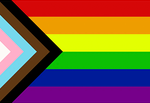History Week 2023 - Overlooked History
This week (2 – 10 September) is History Week 2023. It’s the perfect week to highlight parts of Australia’s history that are very significant to us here at Wattle Place, but continue to be largely overlooked in the wider community, even though it is history that happened within the lifetime of many of us.
The two parts of Australia’s history that Wattle Place is reminded of each day, are the shameful history of “child welfare system” (out-of-home care) and the history of forced adoptions in Australia.
The history of child welfare system you may not know about
The presumption is that child welfare systems were put in place to ensure the welfare of children. The reality is, the history of Australia’s child welfare system is one of abuse and trauma being inflicted on the children it was supposed to protect.
Forgotten Australians is one of the terms applied to adults who were placed in ‘out-of-home care’ as children between 1920 and 1990, in Australia, under government child welfare policies. ‘Out-of-home care’ incorporates institutional settings including orphanages and children’s homes, etc, and foster care placements. The reasons children were taken into out-of-home care varied. These reasons included being orphaned, being born “out of wedlock”, domestic violence, parents divorcing or separating, poverty and the parents’ inability to cope due to addiction or mental illhealth. Under the Child Welfare Act 1939, children could even be charged with being neglected and made a ward of state.
Former Child Migrants refer to people who were sent as unaccompanied children, from Britain and Malta, to institutions throughout Australia, between around 1912 and the late 1960s. It is believed there were approximately 7000 child migrants.
Before the war, Britain wanted to remove children from their overcrowded welfare institutions and provide them with farming or domestic skills. After the war, this policy assisted ‘Empire settlement’, which aimed to increase the white Australian population with British-born citizens. Children often came from disadvantaged families and were sent to Australia without the parents’ knowledge or consent.
Experiences that were the exact opposite of welfare
For all these children, the environments within institutions and foster homes were generally not conducive to healthy physical growth, social and personal development or educational achievement. While not all institutional or out-of-home care experiences were negative, sadly a large proportion of them were incredibly traumatic. Many of these children were not only raised in environments devoid of nurturing and affection but were subjected to extreme abuse and cruelty. They suffered horrific brutality, sexual assault, humiliation, neglect, exploitation, poor or non-existent health and dental care, poor or non-existent education, separation from family, abandonment and a loss of identity.
Through no fault of their own, these poor children were placed at the mercy of people who turned out to be, in far too many cases, inexplicably cruel and exactly the opposite of what they needed for a thriving and successful life.
As most people in Australia know, the Stolen Generations are the generations of Aboriginal and Torres Strait Islander children who were forcibly removed from their families and communities by both State and Federal Governments. They too, were often placed in institutions including children’s homes alongside “Forgotten Australians” and “Child Migrants”, in religious missions, or in foster homes with non-Indigenous families. Others were adopted or assigned as servants to non-Indigenous families, rather than being place in out-of-home care.
This took place under assimilation policies, rather than welfare policies, but, those in authority could have chosen to care for the welfare of those children they removed, but, as with Forgotten Australians and Child Migrants, they chose to be cruel and incredibly abusive instead.
It is estimated that there were around 500 000 Forgotten Australians, Stolen Generations and Child Migrants. The extent of the abuse and trauma was such that there have been 3 Inquiries by the Australian Government into what happened to these children. Apologies have been made by State and Federal Governments, to the adults those children became, and support services such as Wattle Place were established because it was recognised that the impacts of their trauma in childhood remain with them throughout their lives.
Australia’s history of forced adoptions
In Australia, it was common practice in the past to remove newborn babies from mothers who “society” deemed to be unfit parents, often based on moral grounds, for instance, teenage and unwed mothers.
Babies were taken at birth and given to childless married couples, sometimes without consent of the mother or using unethical, dishonest, even illegal, methods to obtain consent under duress, deception, manipulation or coercion. In some cases, the mothers’ signatures were forged on consent documents. These practices were carried out by doctors, nurses, social workers and religious figures. The mother’s family members were often complicit in coercing her into the adoption. Mothers were often sent to institutions for the pregnancy, until the baby was born. The treatment they received at these institutions was often harsh and abusive.
Medical treatment during the birth was often poor, sometimes abusive and sometimes involved drugs being administered against the mother’s will.
The separation experience at birth for a mother and her baby was often profoundly traumatic for both of them.
Fathers were generally not allowed to visit the mothers during their stay in the institution, and did not see the babies after they were born. Their input or wishes about the child or adoption were often ignored.
Following the removal of children, mothers were discouraged from speaking about their experiences. Even when they did speak out, they were sometimes not believed or even blamed for what happened. Some mothers may not identify their adoption experience as being ‘forced’, because ultimately they may have made the decision. However, the shame and guilt that society cast on parenting outside of marriage, particularly on unwed mothers, made it an almost impossible choice, especially in the peak period of these practices, the mid 1970s.
Forced Adoptions were commonly “closed adoptions” which meant the original birth certificate, if one was issued, was sealed. This was done so the child couldn’t access it or see the original names written on it. These policies were put in place deliberately to prevent parents and children re-connecting.
It is estimated that around 250 000 babies were adopted in this way. Again, the Australian Government conducted an Inquiry into these practices, to expose the truth and gave an apology to people impacted by past forced adoption practices.
So, these are clearly significant parts of Australia’s history, but despite many efforts and Government acknowledgement, it remains a largely unknown part of our history.
Why does that matter?
It matters to the people Wattle Place works with because they want people to believe them. They want people to know who “Forgotten Australians” are and what “forced adoptions” mean, without having to go into the details of their own experience.
The more people who know about this history, the greater the sense of validation for Forgotten Australians, Stolen Generations, former Child Migrants and people impacted by forced adoptions. The more their stories are believed and understood, the more they can know that they, and their stories, matter.




